6. Krull (Sword and Sorcery apologia III)
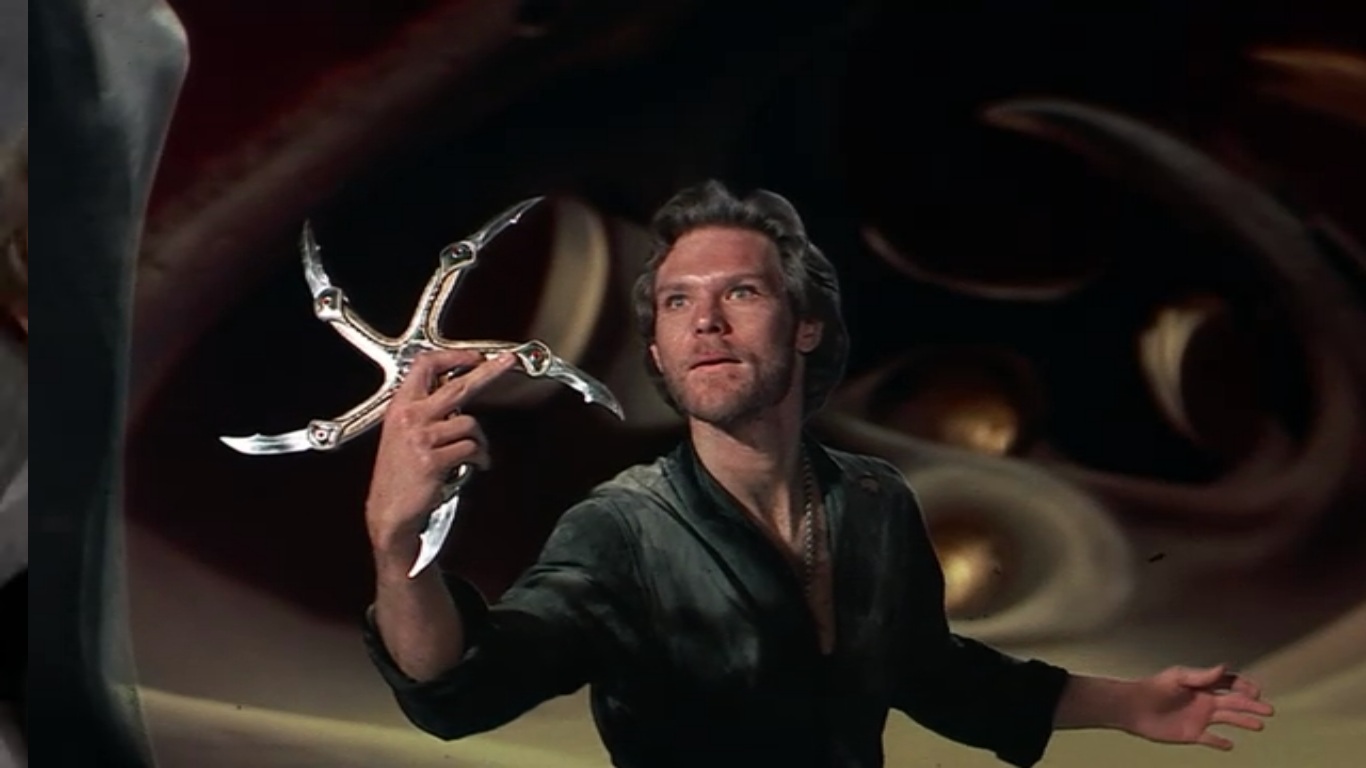
Krull, released in 1983, marked the beginning of the end of the sword-and-sorcery craze Hollywood had so wittingly backed itself into at the beginning of that decade. Directed by Peter Yates, who had excellent films to credits to his name, such as “Bullit” and “The Friends of Eddie Coyle,” one would expect to be treated to well-mounted action sequences and idiosyncratic anti-heroes. Guess again.
Instead, Krull is a strange amalgam of sci-fi and fantasy epic, never seeming to be able to decide whether it’s setting is one of the far future, replete with laser swords and truncheons, or, if it is set in a distant, fantastic past, populated by ogres and wizards. Confused yet? You should be.
Having just disparaged the film, it should be said that Krull does have its own redeeming, quirky qualities. Part of its charm is the characters themselves: a determined warrior-prince on a quest to rescue his lady fair; a cyclops who seems to be deadly accurate with his pitchfork-for-a-weapon; a sort-of mercenary played by none other than Liam Neeson (!!);, a shape-changing Emo Phillips, whose only power seems to be turning himself into a menagerie of less-than-menacing animals; and last but not least, a truly annoying little boy. How can any of these people hope to save anyone, or even contemplate defeating the great Beast at the film’s center? How indeed?
Krull has great, mind-boggling set-pieces that look as if they were dreamed up by Ray Haryhauzsen after one too many pulls on the hash pipe: The sticky, vaguely beautiful, lair of the Spider Queen; the outlandish, somewhat insectoid, lair of the Beast once our stumbling band of heroes actually achieve it; impressive, witchy-green fire as everything blows up at the end. These are things the film can take credit for—now, one can only wish it had somehow taken credit for its own confusion.
7. Bram Stoker’s Dracula
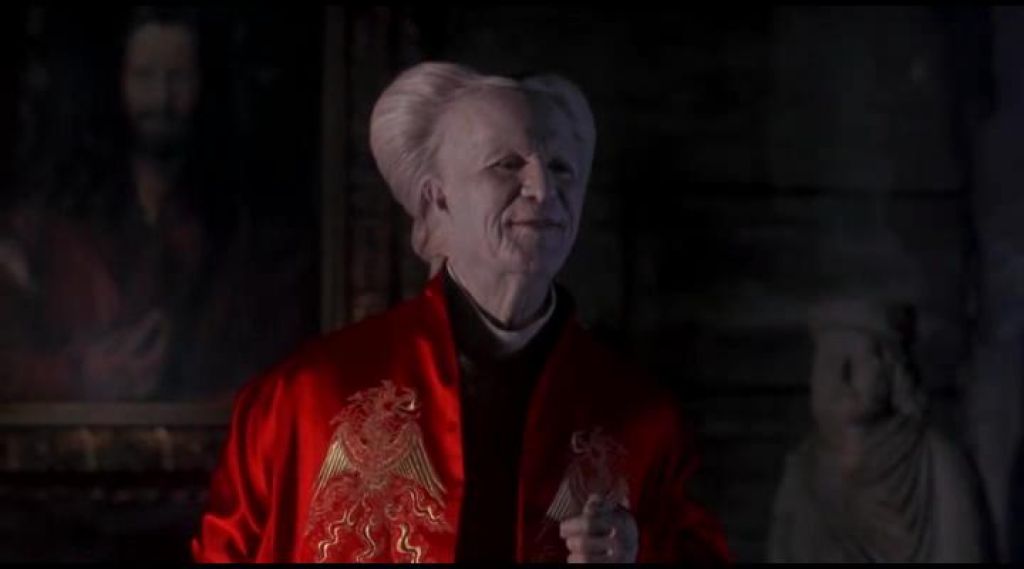
If you’re not careful, Francis Ford Coppola’s version of “Dracula” will twist your aesthetic sensibility into knots, as the film commits cinematic heresy after cinematic heresy, crushing your cinematic brain into powder, as you think: Keanu Reaves is totally miscast; Winona Ryder, beautiful as she is, can’t help from falling in and out of her British accent; Gary Oldman and Tom Waits give tremendous performances in a film that doesn’t seem to acknowledge that they’re occurring. Enough to melt your brain, I’m sure.
Your cinematic brain is brought back out its torpor as you realize, that, YES, Coppola’s Dracula is actually the one film version that comes closest to rendering Bram Stoker’s text to the screen.
Your cinematic brain seems to almost calm itself as you realize how easily Coppola adds gothic touches to his film: gray stone everywhere; sumptuous curtains and rugs bathed in red; and to top it all off, a veritable geyser of blood, provided by Lucy the Vampire, before she meets her stakey demise. It’s pure cinema on the order of Hitchcock, and we are rewarded for lingering too long on a film that doesn’t really deserve it.
My real quibble with the film, however, stems from a personal distaste for Coppola’s insistence that Count Dracula is somehow a doomed Romantic (yes, with a capital “R,” as I’m sure this is how he conceived of it). As someone who actually wrote his college thesis on Stoker’s novel, I can assure everyone that nowhere in the text is there even the slightest hint that Mina Harker is somehow Dracula’s reincarnated bride from centuries ago.
Coppola, however, is so intent on beating this weirdo mis-reading into the viewer’s brain, that it almost ruins his film entirely. If Coppola had stayed away from such strange predilections, his film could have been something truly special; instead, it’s a great-looking guilty pleasure, bolstered by a couple great performances.
8. Conan the Destroyer (Sword and Sorcery Apologia IV)
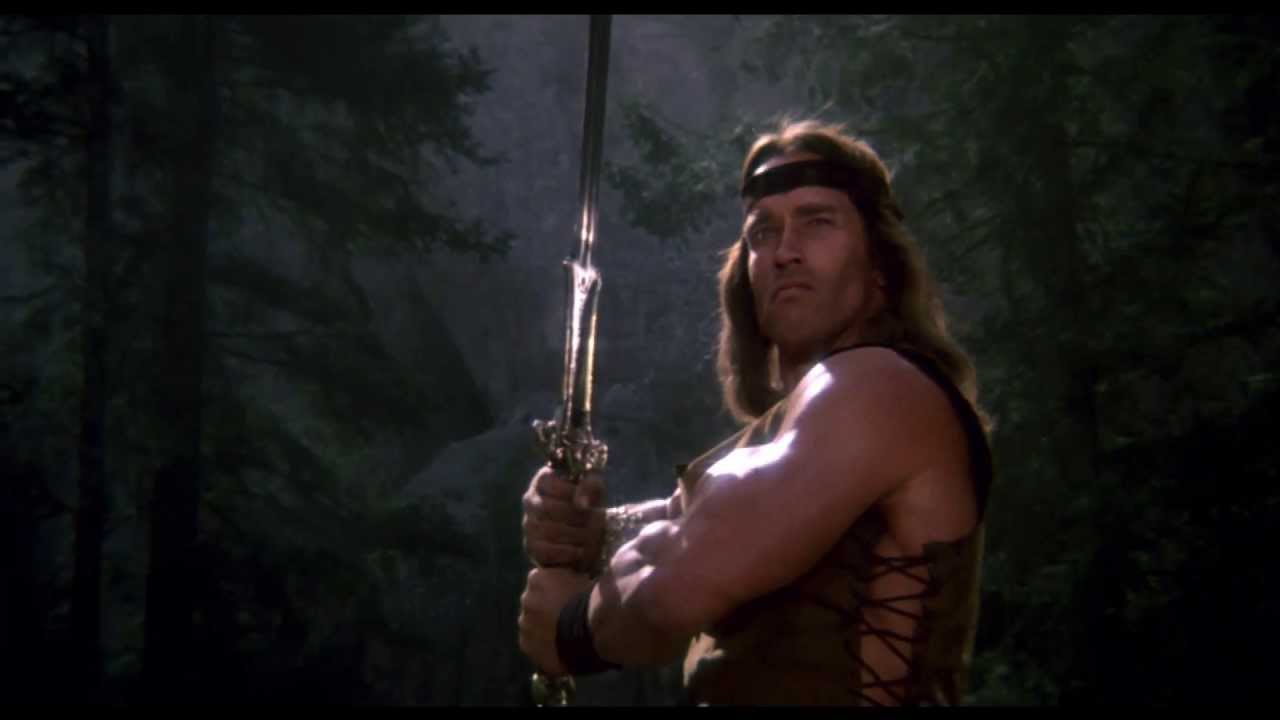
With Conan the Destroyer, Hollywood’s sword-and-sorcery gambit can be said to have come to a screeching, well-deserved halt. Not that it hurt Arnold Schwarzenegger’s movie career, though: 1984 would see Arnold mark the beginning the Terminator franchise—kudos to him.
Still, the cast list alone makes one think that some Hollywood CSA goon was literally throwing darts at a board when this movie was dreamt up: Arnold, of course; Wilt Chamberlain, of basketball fame; Grace Jones, a Warhol Factory-hanger-on; the British model, Olivia D’Abo; respected British actress, Sara Douglas. Nice. Who wouldn’t want to watch that, right?
Why watch Conan the Destroyer in the first place? Maybe because watching Conan the Destroyer is like watching a big, very expensive, video game? Maybe because Arnold’s “drunk scene” will give fledging actors confidence in their own abilities for generations to come? Maybe it’s watching Sara Douglas don her leather garb as the Evil Sorceress, centuries before the Spanish Inquisition made it a fashion statement? Whatever reason it may be, none of it takes away from the second Conan movie’s hammy, hypnotic charm.
Where else can you see Wilt Chamberlain, a man who supposedly bedded thousands of women, unabashedly “defend” Olivoa D’abo’s virginity? Where else can we learn about the birds and the bees and how a man and woman “join together” to express their love? That’s right—only in Conan the Destroyer. Happy viewing!
9. 1941
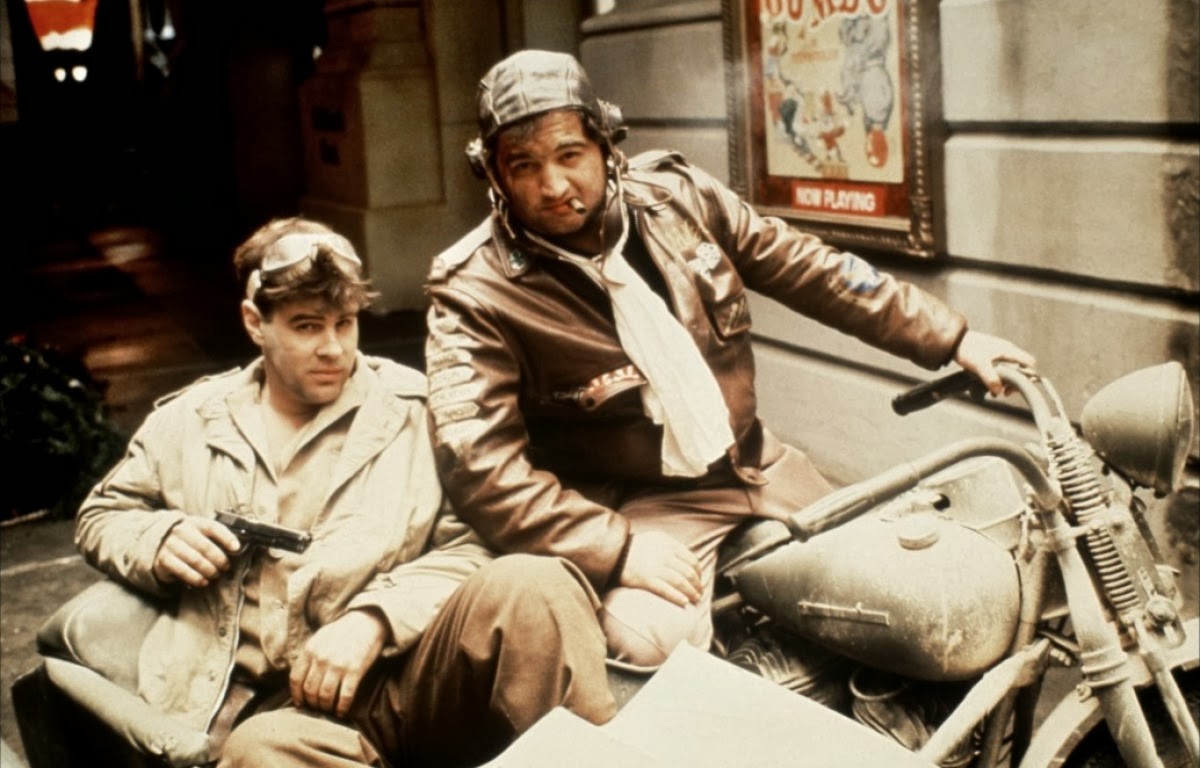
Steven Spielberg’s 1941 is, perhaps, the single most difficult film to justify for inclusion on this list. Many readers of this website will probably shake their heads in disbelief, and I will not question their incredulity. But I will say this: if you want to watch a movie that is gloriously out of control and gleefully insane, you couldn’t do better than watch 1941.
The film often seems like a live-action Tex Avery cartoon, so much so, in fact, that one scene has an unfortunate character seem to survive an entire chandelier falling on his head. Oh, Hollywood! Glorious land of make-believe!
Still, in a movie as chaotic and obnoxious as 1941, there are some unexpected pleasures. John Belushi and Warren Oates are given a brief scene together; you can almost feel the chemical cocktail coursing through Belushi’s veins; almost smell the fumes of alcohol wafting off the screen as Warren Oates barks out his lines; one is reminded of how Hollywood would so quickly be robbed of such powerhouse talents, and you can only shake your head in despair.
We are also treated to brave attempts by Belushi, Dan Aykoryd, and John Candy at injecting comedy into essentially wooden dialogue. Hats off to them.
1941 is a strange beast. One would think that Spielberg, already having proven that he could produce exquisitely made, crowd-pleasing spectacles like “Jaws” and “Close Encounters of the Third Kind,” would have no problems creating his World War II fantasia.
It certainly is spectacular: runaway 50-foot ferris wheels; a massive dance sequence that turns into a mob scene; 40 mm artillery guns taking pot-shots at Japanese subs; all of it is spectacle, but, in the negative sense of the word, as in, “overdone” and “unashamed.” One can imagine Spielberg throwing up his hands behind the camera or in the editing room, wailing wildly, What kind of movie did I just make?!
Spielberg’s imaginary banshee wail brings us to the film’s true, secret pleasure: a young, wunderkind director falling on his face, and falling hard. Nearly 40 years removed from the film’s initial release (1979), 1941 is generally considered Steven Spielberg’s worst film, for many reasons: the near constant chaos on screen, under-utilization of comedic talents like Belushi, Aykroyd, and Candy, plus, the distinct sense that the entire movie is one long, climactic sequence.
Perhaps it was a matter of too many alpha personalities involved in its creation; a young Robert Zemeckis co-wrote the script, while the always unpredictable John Milius sat in the executive producer’s chair. One can only imagine that such powerful personalities had to have clashed on set, and clashed often.
Lastly, 1941 is proof that Hollywood often is nothing more than an inbred community of friends and acquaintances who have worked with each other on other projects: Lorraine Gary, who played Mrs. Chief Brody in “Jaws,” is here, as are Aykoryd, Belushi, and John Candy, all of whom knew each other from “Saturday Night Live” and “Second City,” while Tim Matheson, also in the film, had so successfully worked with Belushi on the set of “Animal House,” only the year before. Hooray for Hollywood—the best community theater gig in the world!
10. Big Trouble in Little China
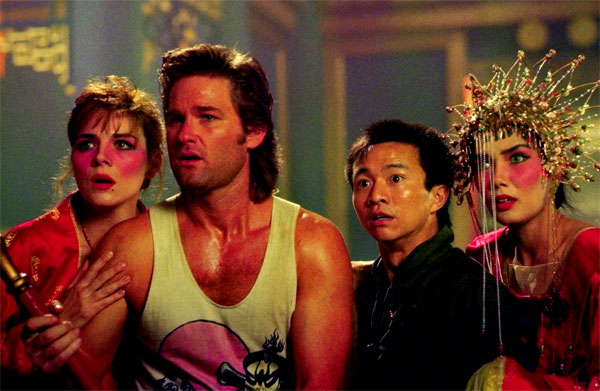
Before smoking his mind into the non-comital haze that gave us truly questionable cinema like “Vampires” and “Ghosts of Mara,” director John Carpenter was fully capable of giving movie-going audiences their money’s-worth in terms of scary fun. Big Trouble n Little China was released in July of 1986, in hopes of racking up the summer dollars so important in Hollywood. It never came close—hobbling out of the box-office having taken in a little more than $11,000,000 domestically. Whoops!
Why did Big Trouble… fair so poorly? There are certainly good things here, or, at the very least, signposts that point in a good direction: It was still the 80’s, and the 80’s often found Carpenter at his creative peak, whether his characters were fighting vengeful pirates (The Fog), inexplicable monstrosities (The Thing), or a post-apocalyptic version of New York City (Escape From New York), his films were always compelling and full of atmosphere.
One would think, then, that Carpenter could do it again with Big Trouble in Little China. Kurt Russell signs on for his third outing as Carpenter’s hero-type, managing to hold our attention the whole way through, battling sewer snakes and irritated weather gods with ease.
The action sequences are well choreographed, even if they often seem ridiculous in the extreme. In fact, everything about the film feels artificial and over-the-top, yet, you want to dismiss such hubris, largely because of Carpenter’s track record of creating spine-tingling fun.
And the film is fun; it is breezy, cartoonish, and easily digestible—as long as you don’t think too hard about what’s happening on screen. It needs exposition, a central component of the lively arts that Carpenter has never been too keen on: rather, he often likes to throw his characters into harrowing situations, allowing event and incident to unfold in a miasma of atmosphere.
If such a concept worked in The Fog and The Thing, why shouldn’t it work here? Well, because Big Trouble in Little China begs for a better plot than a group of guys trying to rescue a couple girls from a horny Chinese demi-god. Discontinuity abounds: How is it that certain members of Russell’s crew are full-on Chinese sorcerers? And where did they suddenly acquire a small arsenal of guns? Why is the film’s villain, David Lo Pan, so dangerous, and why should we care? The fact that none of these things are explained is more than a little infuriating.
Still, Big Trouble in Little China can be thought of as the last decent film John Carpenter made before resting on his laurels as a once great “Master of Horror.” In the years since, Carpenter has made a couple more films, none of them coming close to the dizzy wackiness of Big Trouble in Little China. We should let a Master rest, and call it good.
So there you have it: Ten movies you can’t help but watch every time they show up on TV, or that you somehow pulled from your DVD collection, in order to pass the time. With films such as these, nostalgia plays a large, if not impish, role, if my appreciation of them. I remember seeing Big Trouble in Little China as a 13-year old kid, and thinking it was really cool. Some fantastic, undismissable, shard of that kid still remains whenever I convince myself to watch it again.
The same can be said for films like Krull and Conan the Destroyer, even though I know, in my cinematic heart of hearts, that attaching credulity to these films is akin to swallowing a doorknob—not to be done. There is beauty and true (if sleazy) art on this list: witness Nastassia Kinski in Cat People, and the veritable course in film form Brian DePalma gives us in Body Double. Yup—don’t have to feel guilty about witnessing the sea of flesh in those films, now do I? Right?
Having said all that, I wonder what’s on the Sci-Fi channel tonight? Hey, look, it’s The Beastmaster. Didn’t Don Cascarelli direct that one? Shit….not again.